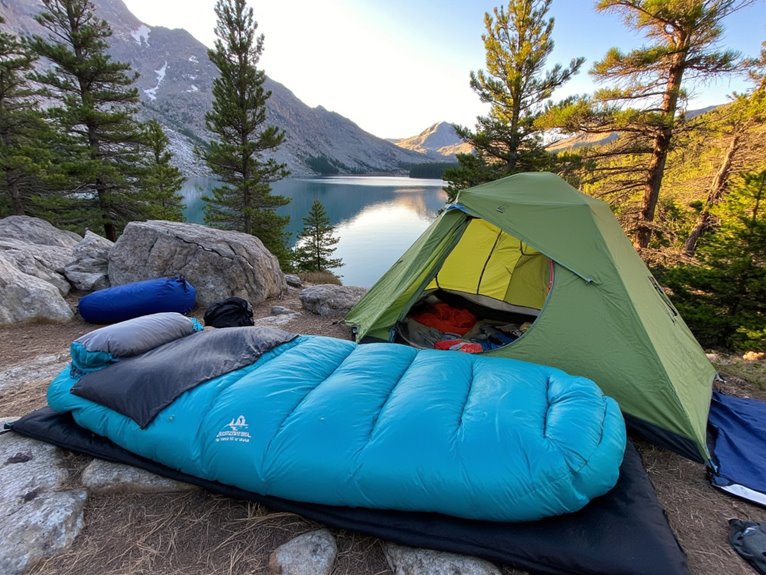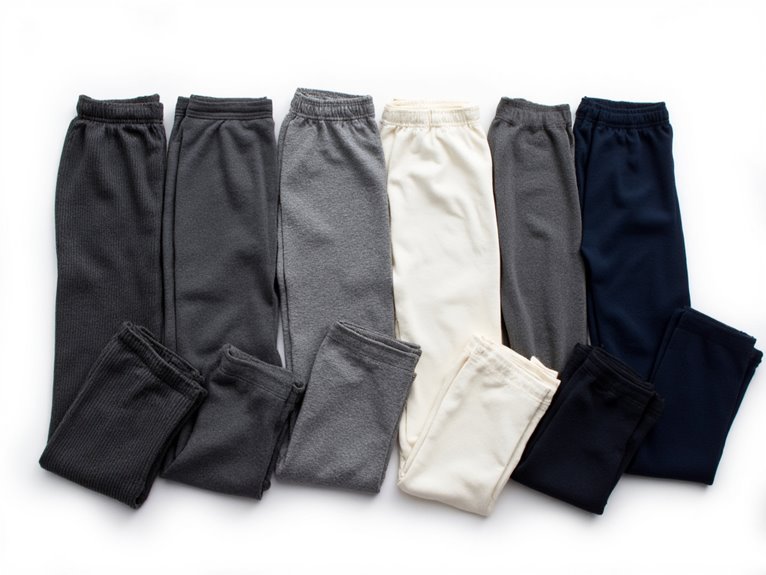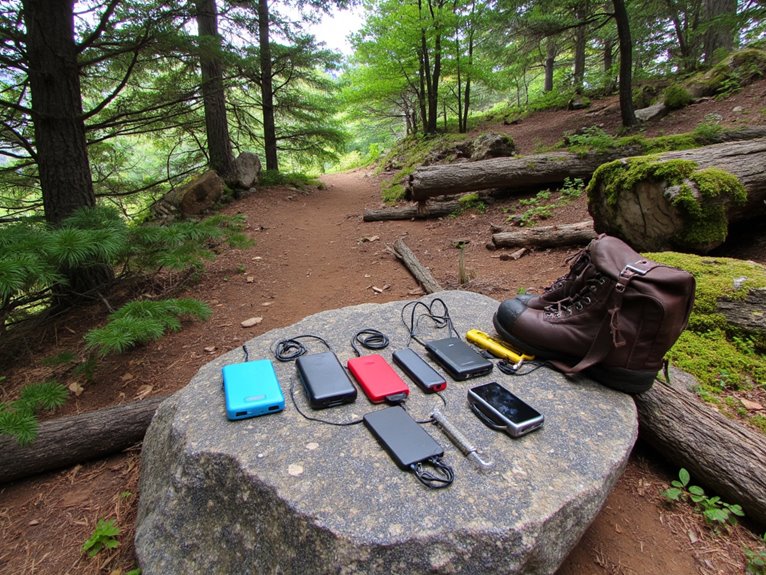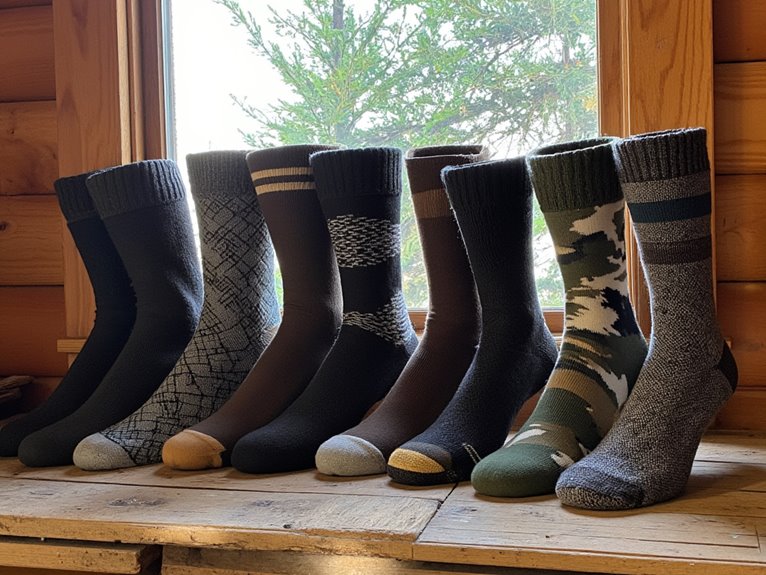The Complete Guide to Backpacking Sleeping Systems
Your backpacking sleep system requires three critical components: a sleeping bag or quilt rated using EN ISO 23537 standards, a sleeping pad with appropriate R-value (1.0-7.0 range), and proper integration techniques. Down insulation offers superior warmth-to-weight ratios but loses 90% effectiveness when wet, while synthetic materials retain 70-80% performance in moisture. Mummy bags provide 15-25% weight savings over rectangular designs, and ultralight systems achieve sub-three-pound configurations. Understanding these technical specifications guarantees ideal performance across varying conditions and reveals advanced optimization strategies.
We are supported by our audience. When you purchase through links on our site, we may earn an affiliate commission, at no extra cost for you. Learn more. Last update on 5th December 2025 / Images from Amazon Product Advertising API.
Notable Insights
- Choose sleeping bags based on EN ISO 23537 temperature ratings (Comfort, Limit, Extreme) and insulation type for your conditions.
- Mummy bags offer superior warmth-to-weight ratios for cold weather, while rectangular bags provide comfort for mild conditions.
- Select sleeping pads with appropriate R-values (4-7 for cold weather) and 4-5 inch thickness for optimal insulation and support.
- Build ultralight systems under three pounds using quilts, which reduce weight by 20-30% compared to traditional sleeping bags.
- Essential features like draft collars, dual zippers, and integrated repair kits enhance thermal efficiency and system durability.
Understanding Temperature Ratings and Insulation Types
Why do sleeping bag temperature ratings vary so dramatically between manufacturers, and how can you determine which rating system provides the most precise guidance for your specific needs?
The EN ISO 23537 standard provides three critical ratings: Comfort, Limit, and Extreme. Comfort indicates temperatures where you’ll sleep comfortably. Limit represents the minimum temperature for curled-position warmth. Extreme marks survival thresholds only.
Understanding EN ISO 23537’s three ratings—Comfort, Limit, and Extreme—helps you choose the right sleeping bag for your temperature needs.
Insulation types directly impact these ratings. Down insulation offers superior warmth-to-weight ratios but loses effectiveness when wet. Synthetic materials retain insulation properties in moisture but weigh more. Higher fill power down provides better loft and warmth.
Temperature comparisons between bags require identical testing standards. The EN rating system guarantees consistent measurements across manufacturers, producing reliable Lower and Comfort ratings for different user profiles.
Down insulation can lose up to 90% of its thermal efficiency when wet, while synthetic insulation maintains thermal protection even in damp conditions by losing only 20-30% of its insulation value.
Sleeping Bag Shapes and Essential Features
When selecting a sleeping bag for backpacking, you’ll need to choose between mummy and rectangular shapes, each offering distinct advantages for different camping scenarios.
Mummy bags provide superior heat retention through their tapered design and snug fit, which minimizes dead air space and reduces your pack weight by up to 30% compared to rectangular alternatives.
The shape you choose directly impacts critical features like hood design, draft collar placement, and zipper configuration—all essential elements that determine your sleeping system’s thermal efficiency in the backcountry.
Look for mummy-style bags with dual zippers, draft collars, and spacious footboxes to maximize both comfort and heat retention during your backpacking adventures.
Mummy Vs Rectangular Bags
Two primary sleeping bag designs dominate the backpacking market, each engineered for distinct performance priorities and user preferences.
Mummy benefits include superior thermal efficiency through tapered construction that reduces internal airspace by 30-40% compared to rectangular designs. You’ll experience minimal heat loss thanks to contoured shapes, adjustable hoods, and draft collars that seal warmth effectively. These bags compress smaller and weigh 15-25% less than rectangular alternatives.
Rectangular advantages center on comfort and freedom of movement. You’ll enjoy unrestricted sleeping positions with box-like internal space that accommodates side sleepers and restless movements. However, you’ll sacrifice thermal efficiency and carry additional weight.
For cold-weather backpacking, choose mummy bags. For car camping in mild conditions, rectangular bags provide superior comfort without weight penalties affecting your hiking performance.
Heat Retention Features
Beyond shape considerations, your sleeping bag’s heat retention capabilities depend on several engineered features that work together to trap warm air and prevent thermal loss.
Multiple layer construction distributes fill evenly, eliminating cold spots that compromise insulation efficiency. Draft tubes running along zippers create thermal barriers, while shoulder baffles add targeted protection against convective heat loss.
Key heat retention features include:
- Full-length draft tubes along zippers to prevent thermal bridging
- Cinchable draft collars around neck and shoulder areas
- Extra fill distribution in footbox and extremities
- Anti-snag zippers with thermal backing
- Foot warmer pockets for targeted heat zones
Fill distribution matters greatly. Extra insulation in the footbox keeps your feet warmer longer, reducing overall body heat loss.
Insulated draft collars minimize heat escape around your neck and shoulders—critical areas for maintaining core temperature.
Sleeping Pad Types and R-Value Considerations
Your sleeping pad choice directly impacts your comfort and warmth throughout the night, making it essential to understand the different types available and their insulation capabilities.
Five main categories exist: air pads that compress to bottle size, self-inflating pads with foam cores, durable closed-cell foam options, hybrid designs, and specialized pads for specific needs like side sleeping.
The R-value rating system measures thermal resistance from 1 to 7+, guiding your selection based on seasonal conditions and personal sleep requirements.
For optimal comfort, sleeping pads with 4-5 inches of thickness provide the best support, particularly important for side sleepers who require additional cushioning against uneven terrain.
Pad Types Comparison
When selecting a sleeping pad for backpacking, you’ll encounter three primary categories, each engineered with distinct trade-offs between comfort, weight, and durability.
Air pads deliver superior pad thickness and comfort levels, often compressing to Nalgene bottle size. Advanced models achieve R-values up to 7.3 through bonded insulation. However, puncture vulnerability remains their critical weakness.
Self-inflating pads balance moderate weight considerations with enhanced durability features. The foam core automatically draws air inside, requiring minimal inflation effort while providing better puncture resistance than air pads.
Closed-cell foam pads offer maximum durability and reliability:
- No puncture risk or deflation concerns
- Insulation retention when wet or damaged
- Lowest weight but bulkiest pack size
- Minimal comfort and R-value performance
- Ideal backup protection for harsh conditions
Each type serves specific backpacking priorities and conditions.
R-Value Selection Guide
Selecting the appropriate R-value determines whether you’ll sleep comfortably or shiver through the night, making this metric the most critical specification on any sleeping pad.
R value importance becomes clear when you consider that heat loss to the ground accounts for up to 80% of total body heat loss during sleep. The standardized scale ranges from 1.0 to 7.0, with specific thresholds for different conditions: R-values under 2.0 suit warm weather, 2.0-3.9 work for cool conditions, and 4.0-5.4 handle cold weather effectively.
Insulation materials like closed-cell foam, synthetic fill, and reflective layers create these ratings. You’ll need R-values of 5.5 or higher for extreme cold conditions.
Match your pad’s R-value to your sleeping bag’s temperature rating for ideal thermal performance.
Building an Ultralight Sleep System
While traditional sleeping bags and heavy pads once dominated backpacking gear lists, modern ultralight sleep systems can deliver superior comfort at a fraction of the weight.
Smart component selection lets you build a complete system under three pounds while maintaining warmth and comfort.
Effective weight optimization requires strategic choices:
- Choose quilts over sleeping bags for targeted insulation
- Select inflatable pads with R-values matching expected temperatures
- Use 15D-25D nylon materials for durability without bulk
- Consider integrated systems for seamless component compatibility
- Prioritize down fill for superior warmth-to-weight ratios
The Sea to Summit Ether Light XR pad delivers R-4.1 insulation at minimal weight.
Zenbivy’s ultralight system combines quilt, sheet, pad, and pillow under two pounds.
True ultralight sleeping pads weigh between 15.9 and 20 ounces while delivering R-values from 4.4 to 7.2 for excellent insulation performance.
Test components together before trips to guarantee proper fit and performance across varied conditions.
Quilts Vs Traditional Sleeping Bags
The choice between quilts and traditional sleeping bags represents one of backpacking’s most significant gear decisions, with each system offering distinct advantages that directly impact your pack weight, warmth, and sleep quality.
Quilt advantages include 20-30% weight reduction compared to equivalent sleeping bags. They compress more efficiently, maximizing backpack space. Quilts excel in three-season conditions, offering superior ventilation and temperature regulation. You’ll appreciate their versatility in warmer weather.
Quilts cut pack weight by up to 30% while delivering superior ventilation and temperature control for three-season backpacking adventures.
Traditional sleeping bag drawbacks center on excess weight from hoods and full backs. Compressed insulation beneath you provides minimal warmth while adding ounces. They’re less packable and offer limited ventilation options.
However, sleeping bags deliver superior heat retention through full enclosure designs. They’re easier to use, requiring minimal setup. For cold-weather backpacking, sleeping bags outperform quilts consistently.
Consider your typical conditions when choosing. Both systems benefit from quality sleeping pads underneath, and knowing basic repair techniques can extend the life of your sleeping pad investment during multi-day trips.
Comfort Enhancements and Advanced Features
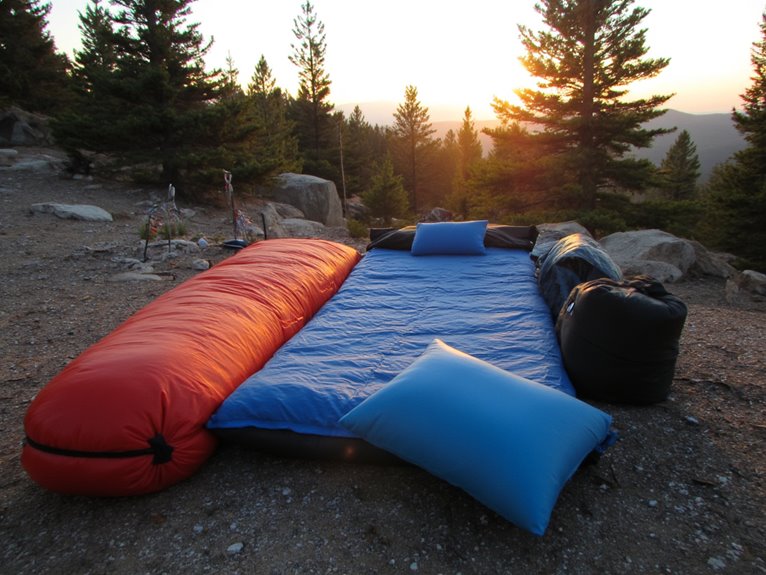
Modern backpacking sleep systems incorporate comfort enhancements and advanced features that considerably improve rest quality without compromising pack weight.
These comfort upgrades include thermal regulation fabrics, integrated draft collars, and adjustable hood designs that retain body heat effectively.
Advanced sleeping pads feature R-values ranging from 1.0 to 7.0, with higher ratings providing superior cold-weather insulation. Inflatable pads offer thickness options from 1.5 to 4 inches, delivering customized comfort levels.
Essential sleep systems enhancements include:
- Draft collars that prevent heat loss around neck and shoulders
- Footboxes designed to trap warmth around feet
- Full-zip systems enabling temperature regulation and easy exit
- Integrated repair kits for field puncture repairs
- Thermal insulation layers in pad construction
Breathable nylon and polyester fabrics prevent overheating while maintaining waterproof protection.
Side sleepers particularly benefit from pads with 4-5 inch thickness and specialized designs like egg-shaped air cells that conform to body contours and provide targeted support for hips and shoulders.

